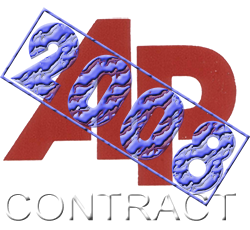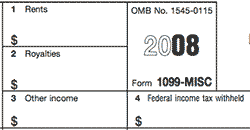The 2008 AP Contract Analysis - Section 1
 The principle sections of the contract begin here:
The principle sections of the contract begin here:
Section 1. Agreement.
1.1. This Agreement sets forth the conditions under which Freelance Photographer shall provide freelance photography services to AP. Freelance Photographer and AP agree that from time to time during the Term (as defined in Section 7 below), AP may commission Freelance Photographer in writing to perform photographic assignments on its behalf (each an "Assignment"). AP may propose such Assignments, but Freelance Photographer is under no obligation to accept any such Assignment by AP. Each Assignment may contain additional terms and conditions that supplement or amend portions of this Agreement for that particular Assignment; such terms and conditions shall be in writing in a separate document prior to Freelance Photographer's acceptance of such Assignment. Any such additional terms and conditions shall apply only to that particular Assignment and shall not apply to any other Assignments. In the event of any conflict between the terms of this Agreement and an Assignment, the terms of this Agreement shall control.
(Continued after the Jump)
Comments:It is important to note the commissioning of assignments here, takes place before-the-fact. While not specifically delineated, the AP has a separate document (and a separate rights clause) for work that the photographer brings in for consideration that are not assignment related. So, if you are an AP freelancer, and see breaking news, and contact the bureau regarding those images, a separate agreement – that is not an assignment – is put forth. In it, you are not assigning/transferring copyright to the entire coverage of the news event, just the image(s) they select to move. You are then free to take the remainder of that content and do with it what you wish. It may be of value to consider making just a single image from an event of this nature available to the AP, with outs like “no mags, no resales, no online, no archive”, and so forth. Thus, only the member papers, for a brief period of time, can use the images, and that becomes a marketing outreach for the rest of your take, which you could market through an agency or other online service. The negotiated points of these agreements are likely more flexible than this contract is.
Could be changed to:
AP could be more clear in the language here, detailing that work that is to be considered an assignment is only work that was commissioned before the time that the assignment was to take place. There’s ambiguity here.
Here's the next sub-section and commentary:
1.2. Freelance Photographer is acting as an independent contractor under this Agreement. Neither the making of this Agreement nor the performance of its provisions will be construed to constitute either Party an agent, partner, joint venture, employee or legal representative of the other Party. Freelance Photographer is responsible for paying all income and other taxes incurred as a result of the amounts received from AP pursuant to this Agreement. AP shall provide Freelance Photographer with an IRS form 1099 each year for any amounts paid to Freelance Photographer during that year.Comments:
This is pretty standard language. It says you’re not an employee, and this is important because some guild/union rules may, after certain conditions are met (days/hours worked, etc) force the AP to convert you to an employee. This may be an antiquated concept, but the guild/union is looking to protect it’s number of members that are AP employees, and the extensive use of a freelancer, as opposed to the hiring of them as an employee, may be a long-term effort to suppress guild/union rolls, and diminish their ability to negotiate and affect change through a strike, work-stoppage, or slow-down.
It also reminds you that you have to pay your taxes. Make special note – if you invoice the AP for “photographers fees - $200”, you are taxed on that full amount. If, however, you delineate “Photographers fee - $180, Event Parking - $20”, you may be able to diminish the amount that you are taxed for income by the amount of your expenses. Whether parking, meals, online service charges (Starbucks, etc). More importantly, as noted below, the AP is now paying you royalties.
 Be sure that the 1099 you get from the AP properly identifies that portion of your income as such. This is important because royalties are not generally subject to self-employment (aka social security) tax, which is a savings of 15%. So, if your income is lump-sum listed as $2,000 in section 3 of the 1099, you might find yourself paying $300 in self-employment taxes. However, if your income is listed as $1,000 for your assignments in box 3 – “Other income”, and $1,000 in box 2 – “Royalties”, you would – generally speaking, only be paying $150 in self-employment taxes. This is a simplification of the process, because it doesn’t take into consideration net income versus gross, and so forth, but it’s important to draw the income distinction for tax purposes.
Be sure that the 1099 you get from the AP properly identifies that portion of your income as such. This is important because royalties are not generally subject to self-employment (aka social security) tax, which is a savings of 15%. So, if your income is lump-sum listed as $2,000 in section 3 of the 1099, you might find yourself paying $300 in self-employment taxes. However, if your income is listed as $1,000 for your assignments in box 3 – “Other income”, and $1,000 in box 2 – “Royalties”, you would – generally speaking, only be paying $150 in self-employment taxes. This is a simplification of the process, because it doesn’t take into consideration net income versus gross, and so forth, but it’s important to draw the income distinction for tax purposes.Could be changed to:
It would be better if the AP stated that they would properly delineate the distinction on the 1099. So, instead of it reading “AP shall provide Freelance Photographer with an IRS form 1099 each year for any amounts paid to Freelance Photographer during that year”, it might better read “AP shall provide Freelance Photographer with an IRS form 1099 each year for any amounts paid to Freelance Photographer, reporting assignment payments as “Other Income”, and reporting royalty payments as “Royalties” income (if any), during that year.”
Continue Reading:
- The 2008 AP Contract Analysis - Introduction
- The 2008 AP Contract Analysis - Opening Recitations
- The 2008 AP Contract Analysis - Section 1
- The 2008 AP Contract Analysis - Section 2
- The AP 2008 Contract Analysis - Section 3
- The AP 2008 Contract Analysis - Section 4
- The AP 2008 Contract Analysis - Section 5
- The AP 2008 Contract Analysis - Section 6
- The AP 2008 Contract Analysis - Sections 7,8 & 9
- The AP 2008 Contract Analysis - Rates
Please post your comments by clicking the link below. If you've got questions, please pose them in our Photo Business Forum Flickr Group Discussion Threads.

0 comments:
Post a Comment